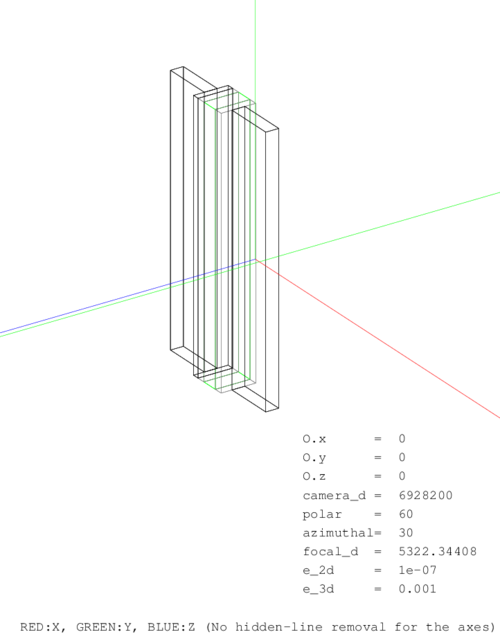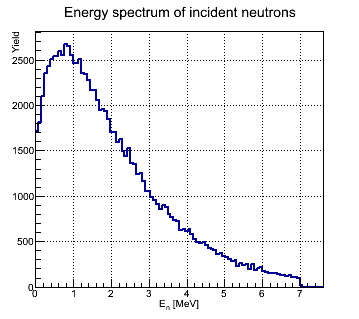Difference between revisions of "X-talk between n-dets"
| Line 16: | Line 16: | ||
Neutrons were incident uniformly over the surface of one of the neutron detectors normally to the surface w/o hitting the shielding and the analysing detector such that we have pure x-talk effect due to neutron interaction with the material BC-420 of the neutron detector being irradiated. The analysing detector detected all the particles scattered/produced in the shielding/BC-420. | Neutrons were incident uniformly over the surface of one of the neutron detectors normally to the surface w/o hitting the shielding and the analysing detector such that we have pure x-talk effect due to neutron interaction with the material BC-420 of the neutron detector being irradiated. The analysing detector detected all the particles scattered/produced in the shielding/BC-420. | ||
| + | |||
| + | '''Stage 1 of the simulation''' | ||
Revision as of 15:08, 19 August 2014
The simulation of the cross talk between two neutron detectors was performed using GEANT4 program. The simulated detector layout is shown below:
The following stages of simulation of the x-talk were considered:
1) the x-talk effect is due to the acceptance of the analysing detector, i.e. there was no shielding in between the two detectors;
2) only 2" of borated poly was placed in between;
3) borated poly was placed in between two layers of 1" lead layers.
The number of incident particle (neutrons) was and their energy spectrum is shown below:
Neutrons were incident uniformly over the surface of one of the neutron detectors normally to the surface w/o hitting the shielding and the analysing detector such that we have pure x-talk effect due to neutron interaction with the material BC-420 of the neutron detector being irradiated. The analysing detector detected all the particles scattered/produced in the shielding/BC-420.
Stage 1 of the simulation

